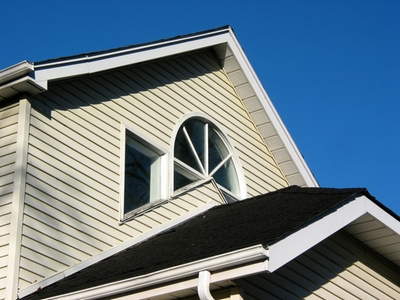Gutters vs. Gutter Guards: What Works Best In Pine & Live Oak Yards

Gutters vs. Gutter Guards in Houston: What Works Best in Pine & Live Oak Yards
Houston weather moves fast, and so does roof debris. If your home sits under tall pines or mature live oaks in areas like Kingwood, Memorial, or Garden Oaks, your gutters face a constant stream of needles, leaves, and spring catkins. Choosing the right setup keeps water moving during our intense downpours. To see options built for local rain and trees, explore our gutter installation in Houston page from Roofs R Us.
In this guide, we compare standard open gutters and modern gutter guards for tree-heavy lots. You will learn how local debris behaves, what materials hold up best, and how to keep water off your siding, fascia, and foundation without constant headaches.
Why pine and live oak debris is tough on Houston gutters
Loblolly pines shed fine needles year-round. The needles bridge across gutter lips and guard openings, weaving into tight mats that slow water. Live oaks drop a big flush of leaves and dangling catkins late winter into spring, just before new growth. Mixed together, needles and catkins can paste into a felt-like layer that blocks flow during a heavy storm.
Now add Gulf-fed rain. Sudden cloudbursts and late-summer storms can drop inches of water in a short time. If gutters choke, water spills over the front, soaks beds, and can creep behind fascia. Overflowing gutters can send water into soffits and wall cavities, which risks hidden moisture damage.
Open gutters under trees: pros and cons
What homeowners like
- Simple system with good flow when clean
- Lower upfront investment than most guard systems
- Easy to inspect from the ground
Where open gutters struggle
Without a barrier, pine needles drop straight in, and live oak leaves raft together at the outlets. Elbows and downspout inlets clog first. After a few storms, you may see tiger-striping on the face of the gutter and water tracking over roof edges. If you notice mulch washouts or soil ponds under the eaves, your gutters are not moving water fast enough.
Gutter guards in Houston: types and how they handle pine needles and oak catkins
Screen guards
Basic screens keep out larger leaves but struggle with needles and catkins. The openings are usually too large, letting fine debris lodge in the holes. Screens can help for small ornamental trees, but under pines they often need frequent clearing on top.
Reverse-curve covers
These rely on surface tension to roll water around a curved lip while leaves slide off. They can work for broad leaves, yet pine needles often cling to the curve, and pollen or catkin strings can glue along the edge. In very heavy rain, water can overshoot if the pitch or alignment is off.
Micro-mesh guards
Micro-mesh uses a fine stainless-steel screen over a rigid frame. The small apertures block needles and catkins while passing water. Quality systems are reinforced to resist sagging and can be paired with stronger hangers and larger outlets. For tree-heavy Houston yards, micro-mesh is the most reliable choice when professionally sized and installed for the roof pitch and rain rates.
A flat or sagging guard becomes a shelf that collects debris; make sure any guard is tensioned and supported to match your roofline.
The Houston factor: rain intensity, wind, and roof design
Neighborhoods like Spring Branch, Meyerland, and Westbury see fast-moving storms that can overwhelm undersized systems. Two details make a big difference in this climate:
- Downspout capacity. Upsizing outlets and using smooth interior paths helps move needle-rich water and reduces clogs.
- Hanger strength. Stiff hangers and sealed end-caps help gutters resist wind-driven sheets of water and branch contact.
Roof geometry matters too. Valleys focus flow. If a valley dumps onto a short gutter run, the impact load grows. Splash guards or custom diverters can help direct water into the trough where it can drain properly.
What works best under pines and live oaks in Houston
For most homes with heavy tree cover, a micro-mesh guard on properly sized K-style aluminum gutters provides the best balance of flow and filtration. Six-inch gutters paired with larger downspouts handle peak bursts better than five-inch on many roofs. Sealed corners and continuous hangers improve durability under gusty conditions common ahead of summer storms.
Live oaks drop a massive load in late winter, then pollen strings in spring. Pine needles ride the wind year-round. A fine mesh with a rigid body sheds this mix better than screens or curves. When matched to your roof pitch and fascia condition, it keeps the channel open so water goes to the ground through the designed path instead of over your siding.
Maintenance expectations: open gutters vs. guarded gutters
Every home collects debris at a different rate. Lot size, tree height, and wind exposure all play a role. Open gutters in pine and oak yards usually need frequent attention, especially after windy fronts. With a high-quality guard, the channel stays clearer, and any buildup tends to rest on top where it can be swept away during service visits. Even the best guards still need periodic inspection to keep performance high.
If you want a broader overview of seasonal roofing issues around the city, browse our roofing blog and see how Roofs R Us handles storm readiness, ventilation, and drainage together.
Materials and finishes that hold up in our climate
Aluminum remains a go-to for its balance of strength and corrosion resistance. In areas with salt-laden breezes or constant shade, baked-on finishes help reduce streaking. Copper is durable and attractive on historic homes in The Heights or Montrose, though most homeowners pick aluminum to match trim colors. Micro-mesh guards with stainless-steel screening resist rust and heat and stay flatter over time.
Consider expansion and contraction. Long, sun-exposed runs move as temperatures swing. Rigid frames and proper fastening avoid ripples that trap debris. Thoughtful outlet placement reduces standing water at the ends of runs and keeps your fascia dry.
Sizing and flow: getting water off the roof fast
Our storms can be intense. Many homes benefit from larger-capacity components. Wider gutters, larger outlets, and fewer tight elbows reduce friction so water and fine debris move through. Where a valley dumps a lot of water into a short run, a small splash guard can help guide flow into the trough and toward the downspout. Corner seams should be sealed cleanly to prevent drips that stain siding.
If you want a full system review, you can always start at Roofs R Us to understand how Houston gutters fit into your home’s wider roofing and drainage plan.
Signs your current setup is falling behind
Look for these common red flags after a storm or during leaf drop. You do not need to climb a ladder to spot them from the ground or a window:
Streaks on the outside face of the gutter, small waterfalls at roof edges, and mulch displaced along your foundation point to overload. Water lines on fascia or soffit staining under corners suggest leaks at seams or end caps. Debris showing at downspout outlets means blockages upstream. If you see water where it should not be, it is time for a professional inspection.
Choosing between open gutters and guards
Both systems can work when properly sized and maintained. The decision usually comes down to how much tree cover you have and how steady the debris flow is through the year. In pine and live oak yards, most homeowners prefer a micro-mesh guard to cut surprise clogs and keep water moving during sudden cloudbursts.
Open gutters may still fit homes with limited tree cover or newer plantings. For properties with mature canopy or in neighborhoods like Kingwood, Spring Branch, or Meyerland, guards reduce the risk of overflow during peak shedding periods. A professional review considers roof pitch, valley locations, and drainage paths around your landscaping.
Protect your home before the next storm
Rain tends to arrive when you are not ready. That is why a tuned system matters. Strong hangers, clean seams, and the right guard keep water off your walls and away from your slab. If you have noticed overflow, streaking, or landscaping washouts, it is a sign your setup is undersized or obstructed. A trained crew can evaluate and recommend the right combination for your roof shape and tree load.
Ready for expert help from a local team that understands Houston’s mix of pines, live oaks, and sudden storms? Call Roofs R Us at 469-781-5557 or schedule a visit through our page on gutter inspection in Houston. We will look at your roof, fascia, and drainage together and help you choose a solution that keeps water where it belongs.
More Tips on Uncategorized











